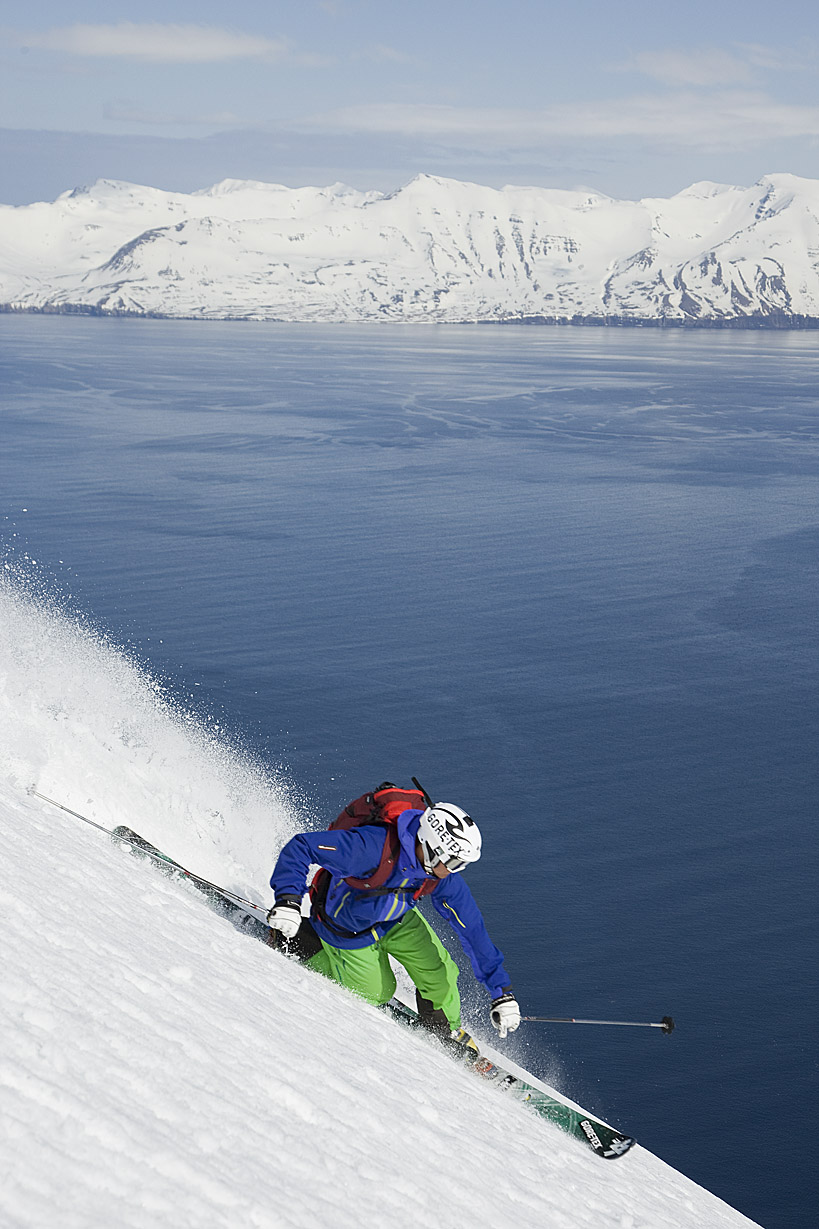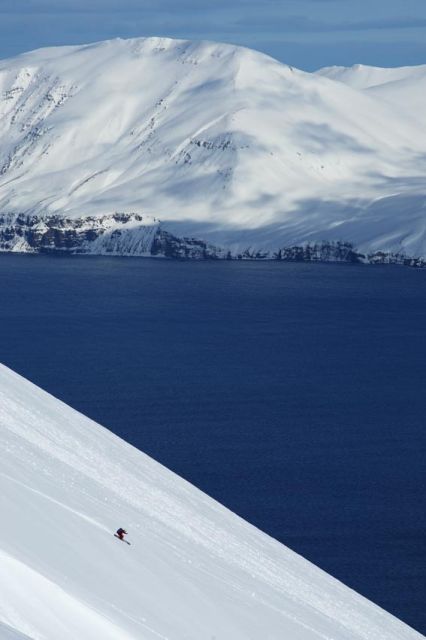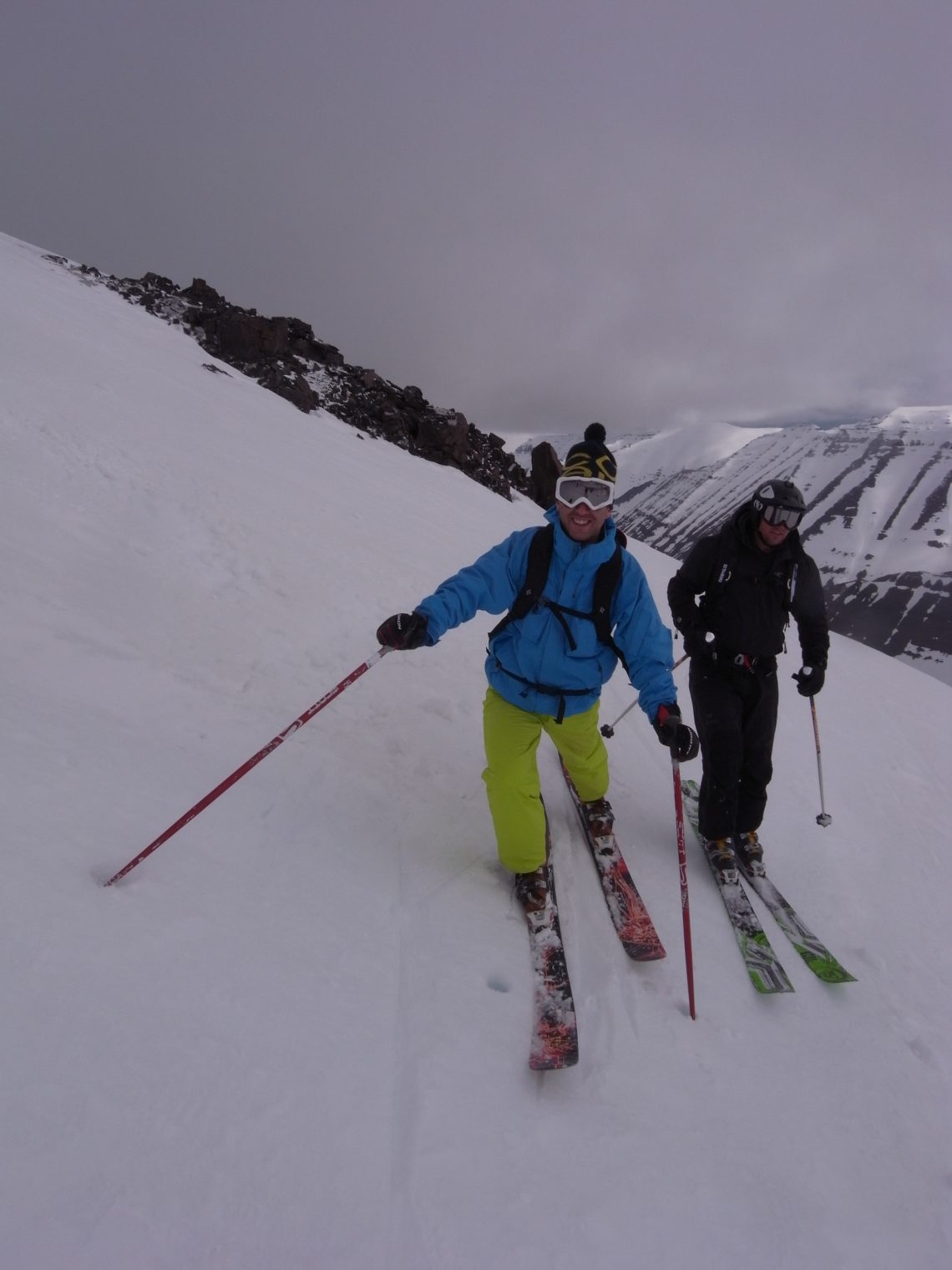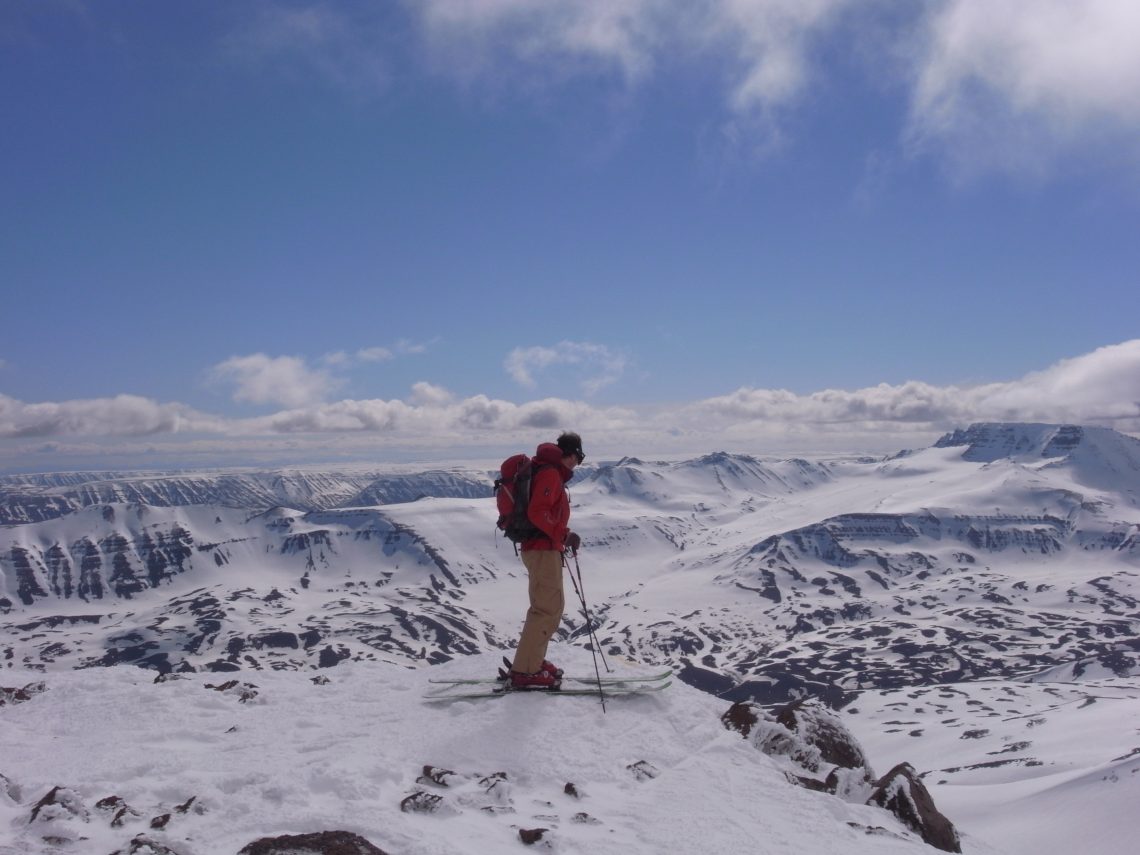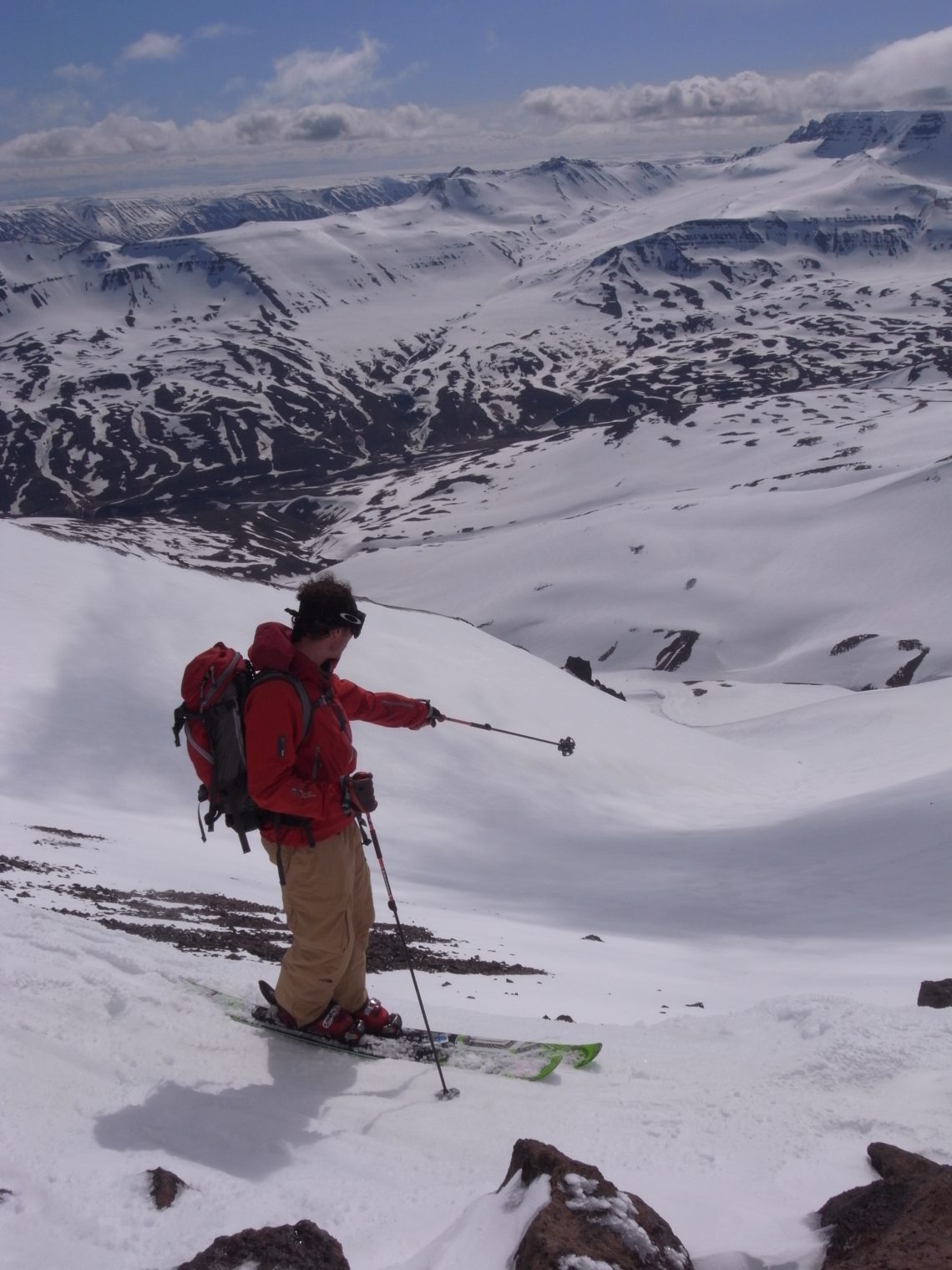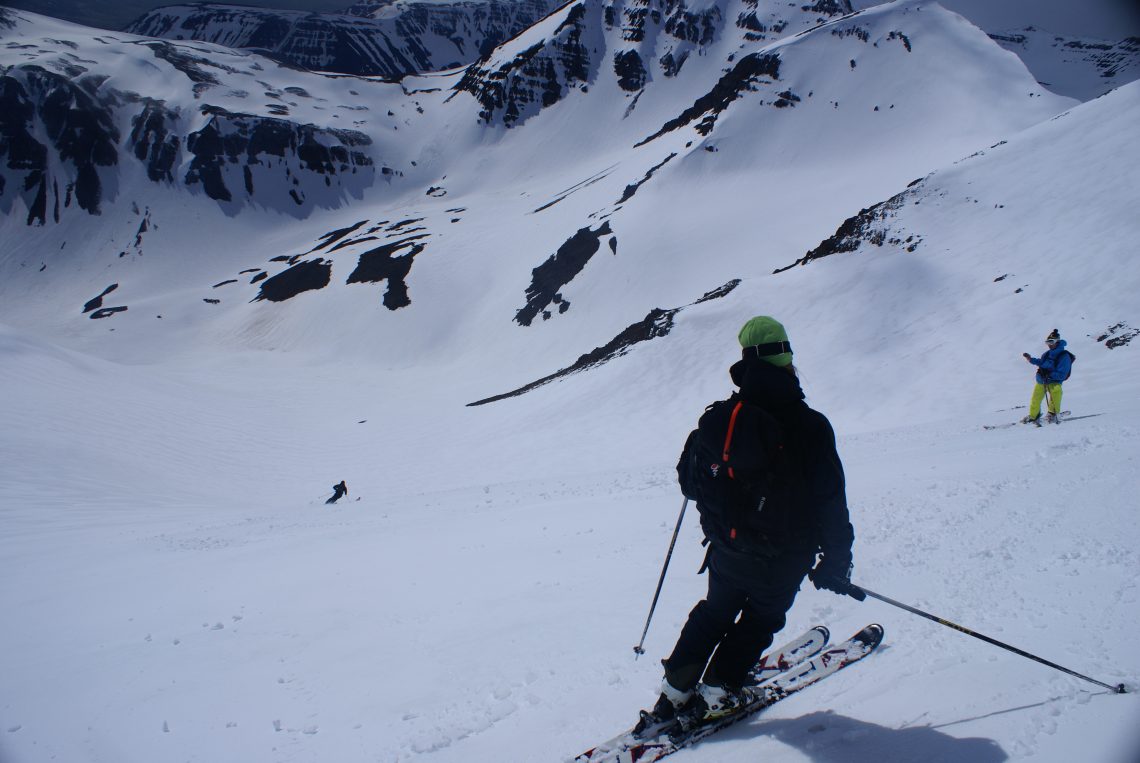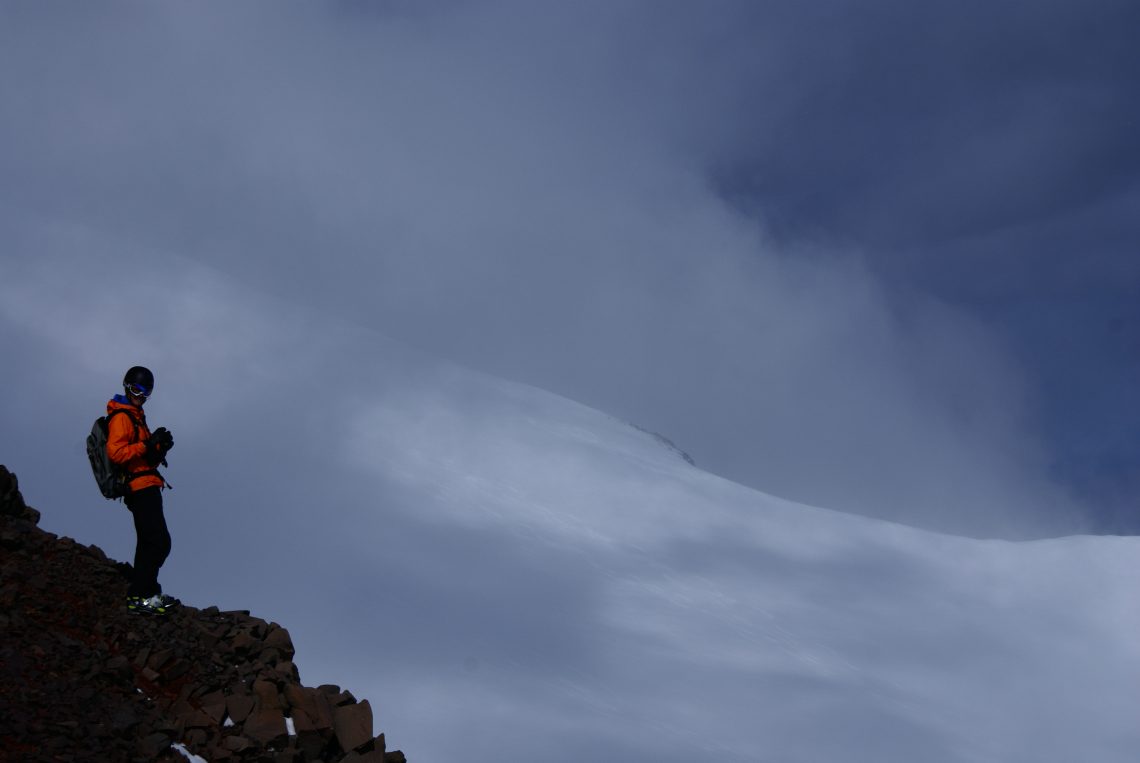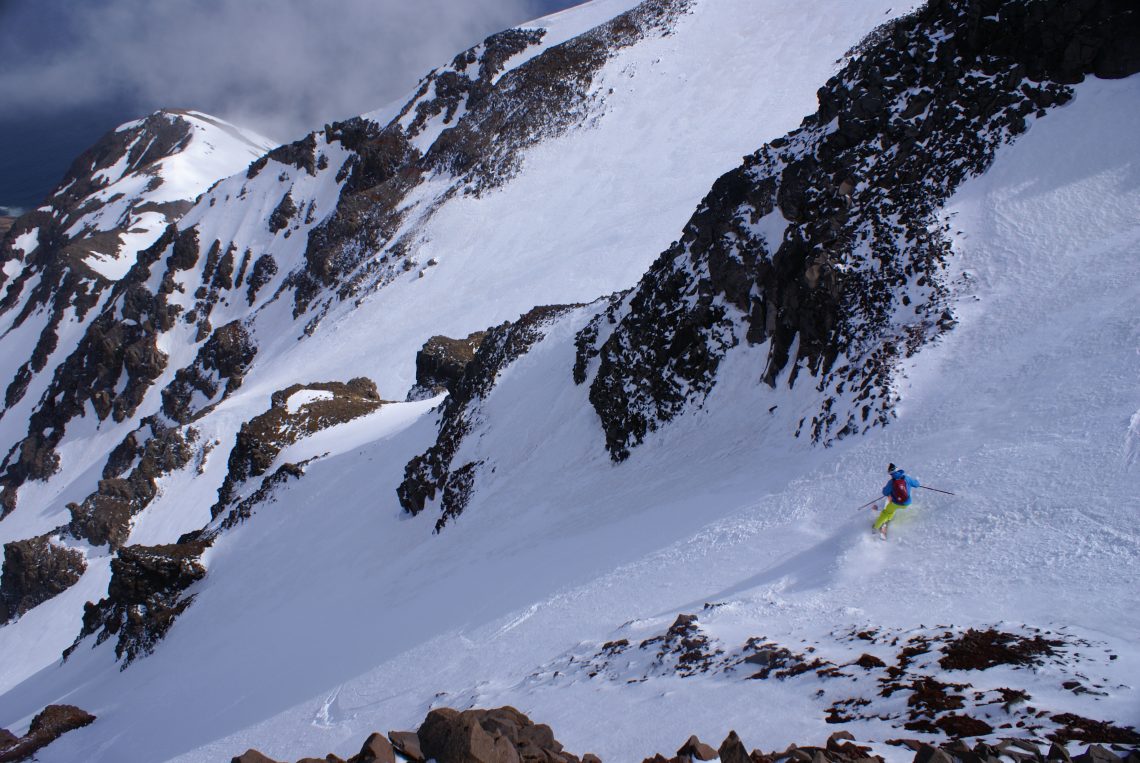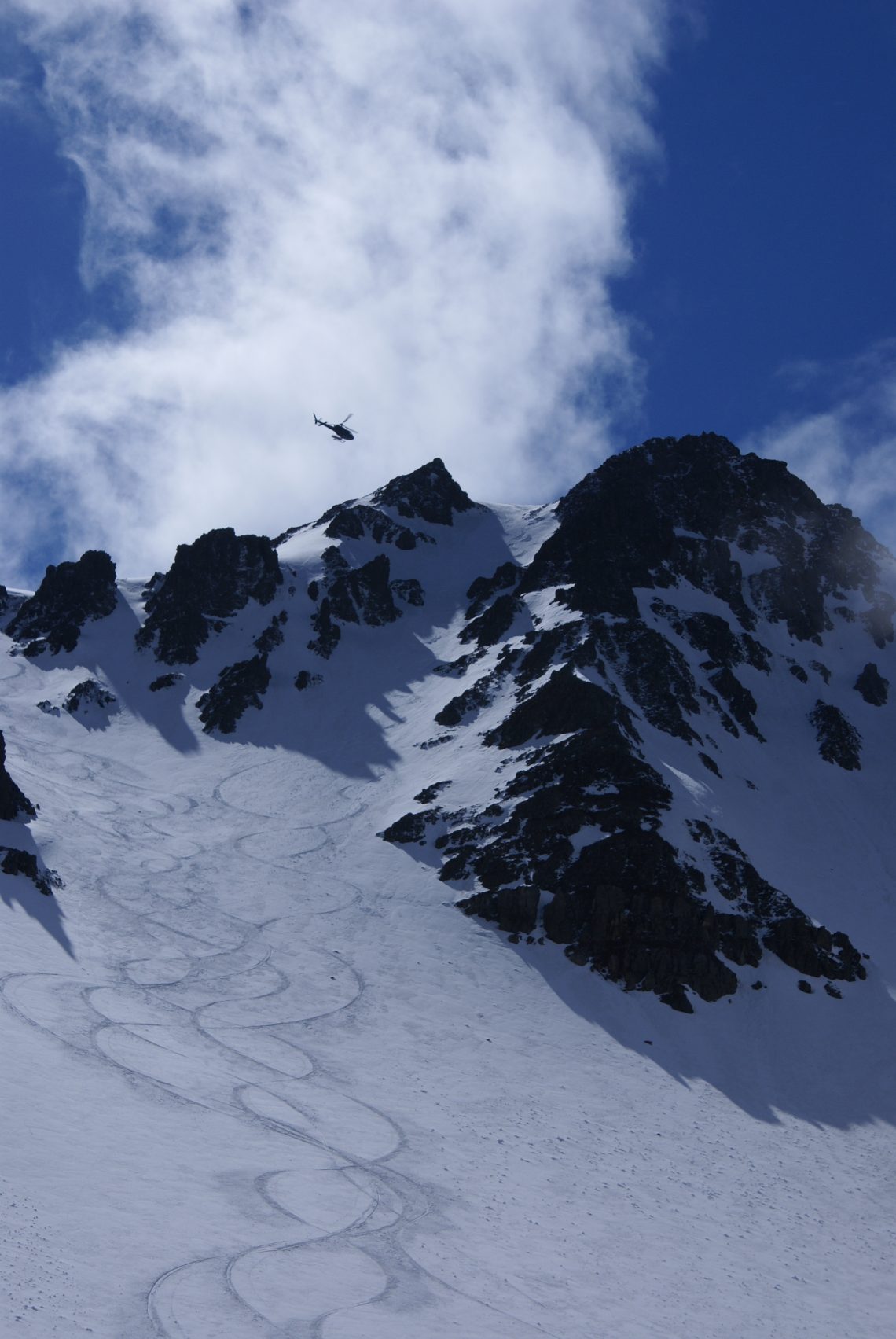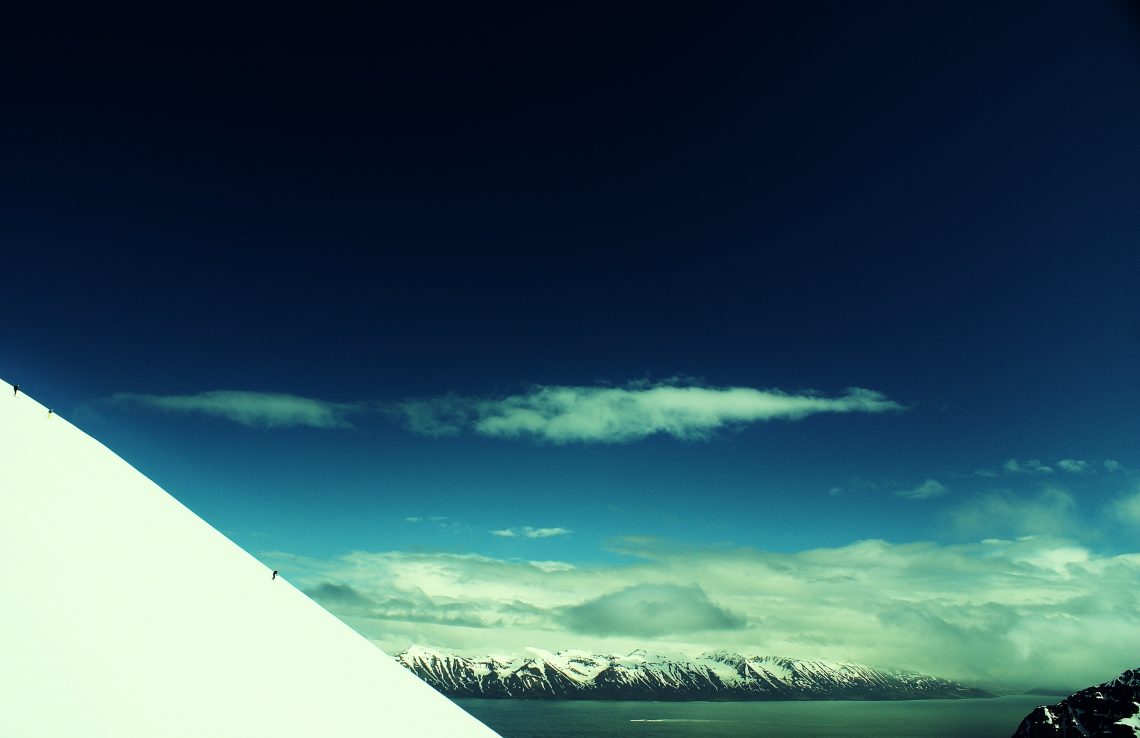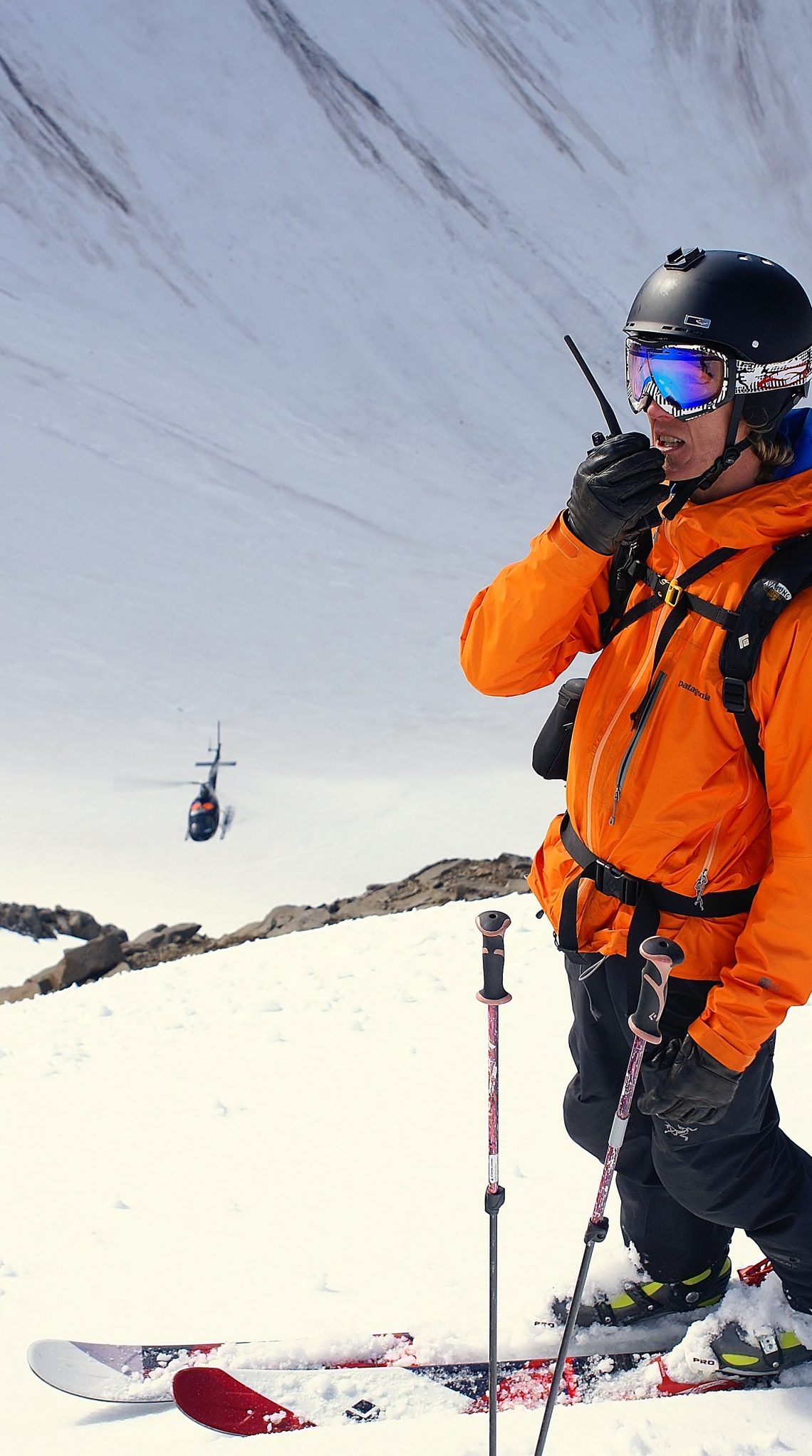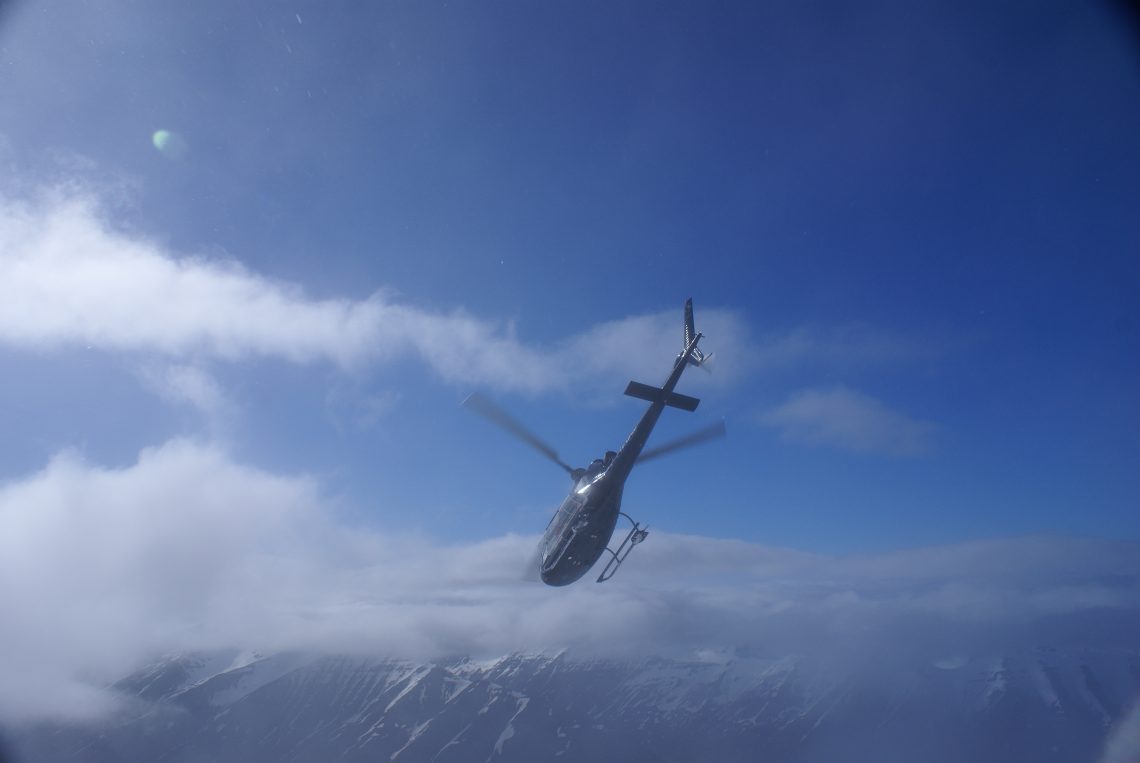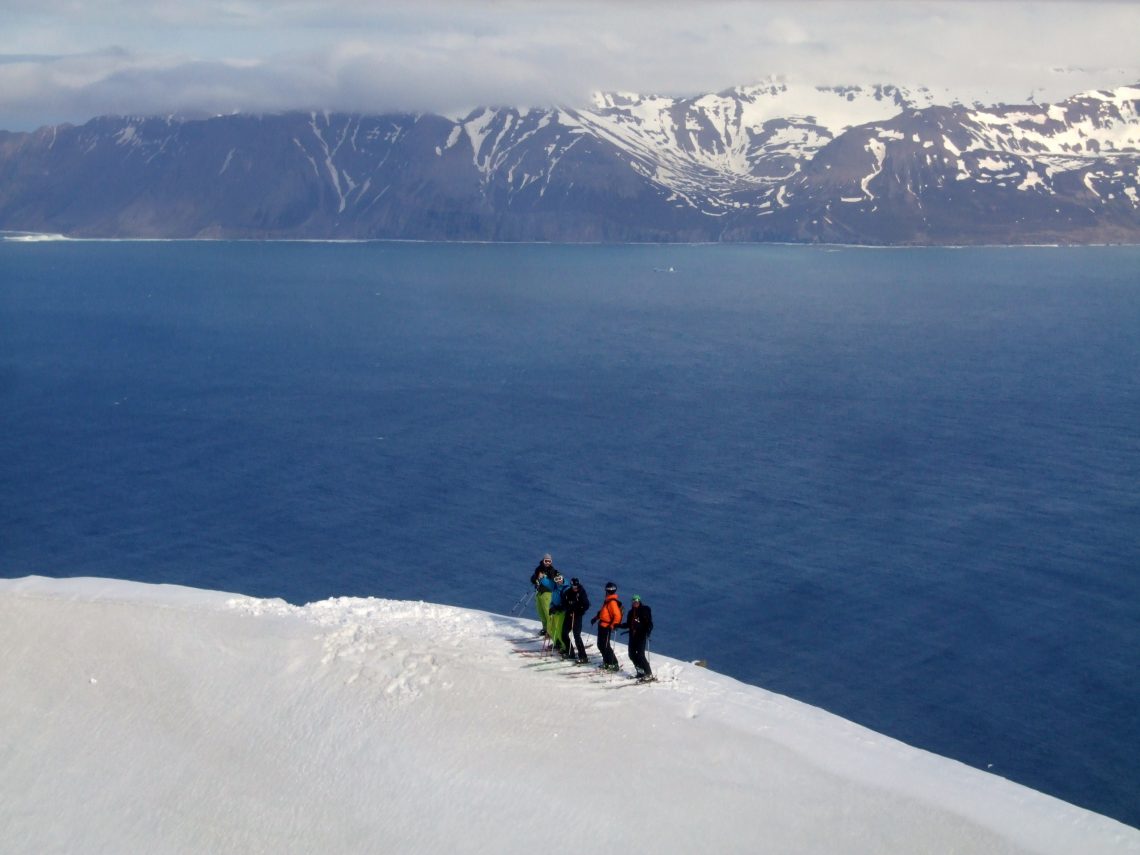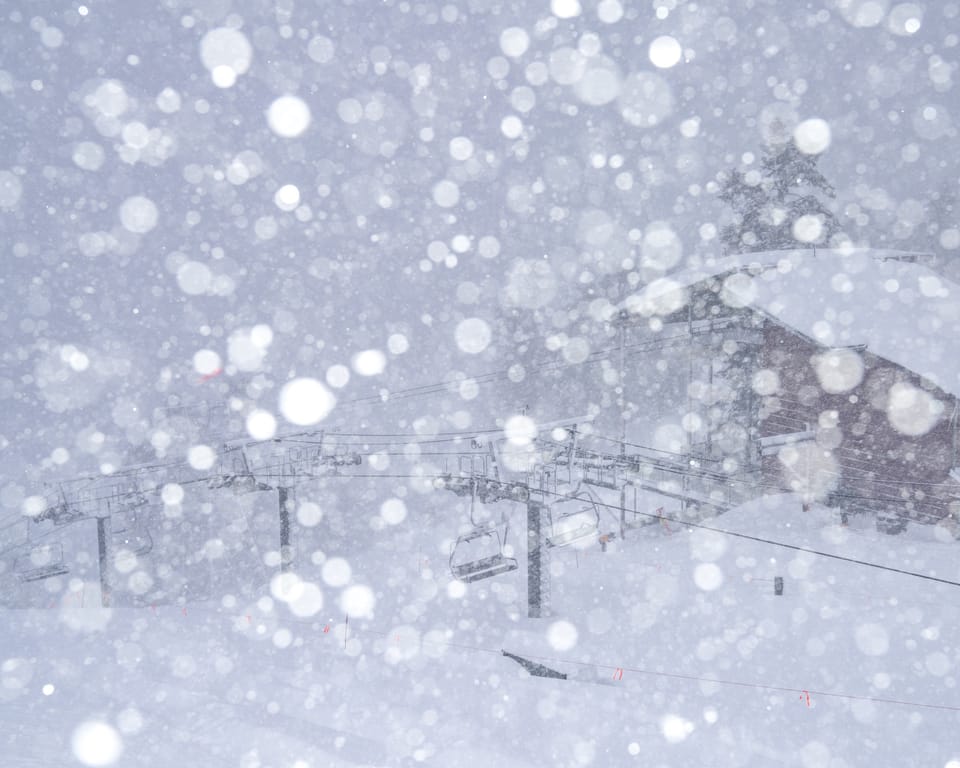SKIING WITH SHARKS...

Heliskiing in Iceland is a unique experience
By Alf Alderson
When a man tells you his family have lived in the same valley since God was a lad you can understand how it is that he knows the area so well – indeed, ski guide Jökull Bergmann’s ancestors settled in northern Iceland before God even existed as far as they were concerned.
His Viking forbears were still worshipping Thor when they rolled ashore on the Troll Peninsula in their longboats in the 9th century; more than a thousand years later their great, great, great (etc.) grandson, universally known as ‘JB’, travels around the area by helicopter as the head guide with Arctic Heliskiing, Iceland’s only heliski operation.
And so it came to pass that one day last April I found myself scrabbling out of the company’s six-seater helicopter with four fellow skiers and onto the summit of 1,100-metre Mount Kerahnjùkur on that very same peninsula. Our pilot Snorri hovered with only one skid on the ground whilst the other hung in space over vertiginous crags, below which glittered the deep blue waters of Eyjafjörður.
Once we’d all emerged from safe side of the ‘heli’ onto the summit and gathered up our skis Snorri took off then dropped like a stone to clatter down towards our pick up point over a thousand meters below. At times like this you wonder who is having the most fun, the pilot or the skiers…
Although the mountains amongst which we’d be enjoying our adventure are modest in height – few peaks rise much above 1,500m, which is considerably lower than the 3,000m summits of the French Alps – the high latitude ensures great snow conditions in Iceland well into June.
Comparisons between heliskiing and resort skiing are pointless – there are no lift queues, no lifts, no mountain restaurants, in fact no sign of humanity whatsoever, and every run is down untracked snowfields. The sight of hundreds of metres of virgin snow isn’t something you encounter too often in the Alps and even when you do it’ll be criss-crossed with tracks like Clapham Central by mid-morning, whereas here in Iceland’s far north every single run you make will be down a glistening white carpet of pristine snow draped across a slope that may never have been skied before.
After our first day of skiing for example, and having clocked up close on 12,000 metres of downhill, JB tells us that nine of the fourteen runs we’ve done today have been first descents. A smug grin can be seen spreading across everyone’s mugs as it sinks in that we are the first people – EVER – to ski these slopes.
We get a quick reality check, however, when JB is asked how many other first descents he reckons there are on the peninsula. “Thousands” comes the reply – perhaps we shouldn’t be looking quite so self-satisfied after all…
Iceland’s ski terrain is unlike anything the ski resorts of Europe and North America can offer. Huge flat-topped mountains rise up above steep slopes and wide, ancient valleys, crags and cliffs streaked with black banded rock outcrops which contrast starkly with the white of the snow. In places the higher peaks are glaciated, and you’ll ski over some of these glaciers whilst heliskiing – in fact our first run of the trip takes us down the gentle upper slopes of the Gljúfurárjökull glacier, which sits at the head of Skiðadalur, the valley where Arctic Heliskiing is based.
It’s a superb introduction to the trip – we begin gently, getting a feel for our skis and the snow conditions on easy angled slopes as the cool sub-Arctic air caresses our faces; gradually the slopes steepen, the skiing becomes more challenging and exciting and that caress becomes a fully-fledged slipstream whistling past our goggles as we drop into wide couloirs, our skis slicing through the spring snow with ease; I feel a convulsion of wild eyed joy at the thought that this is just the first of scores of runs ahead of us…
Perhaps the most unique feature of the Icelandic heliski experience is the constant presence of deep blue fjords and the Atlantic Ocean way down beneath most of your drop off points. Sea level is actually where you’re heading for on many runs and the presence of the ocean serves as a dramatic backdrop, with mighty North Atlantic swells booming onto the black volcanic sand beaches where several descents finish.
One experience you may care to leave to others, however, is sampling the local culinary delicacy. It’s the terrifying dining equivalent of skiing an icy, 60-degree couloir and comes in the form of putrefied shark’s flesh, which is indeed as awful as it sounds. Consisting of what remains of a shark that has been buried in the earth for six months, I can only describe the sensation from my one mouthful of the stuff as feeling like someone had punched me in the throat.
Thank the Lord for the Brennivin which I hastily poured on top of it – another Icelandic speciality, this is the local hooch, which despite being made from fermented spuds and known locally as ‘Black Death’ actually ain’t that bad. Shark and Brennivin traditionally go together as a dining experience – for my part I’ll just stick to the Brennivin next time I visit Iceland, thanks.
The après ski scene when skiing with Arctic Heliskiing is necessarily quite low key. The base of operations is Klængshóll Lodge at the head of Skiðadalur – once you pass Klængshóll there’s just moorland, a couple of impressive waterfalls, then steep slopes which rise up towards permanently snow covered mountains – it’s easy to see why the original Viking settlers felt so at home here.
Klængshóll is JB’s family farm and a far remove from the often glitzy timber lodges of North American heliski operations – dinner is eaten in the farmhouse kitchen along with fellow skiers and members of JB’s family, after which everyone sits outside to enjoy the pastel shades of the early summer sunshine on the mountains, or retires to the lounge to shoot the breeze and watch TV (when I was there the Eurovision Song Contest was on – it’s a big thing in Iceland for reasons best known to Icelanders and since we had a mixed group of Brits, Italians, Icelanders and Croatians it became quite a raucous and good-humouredly nationalistic evening).
Other than eating the rotten shark we dined fantastically well on everything from Arctic char and catfish to ptarmigan, goose and lamb – all local, all organic. Booze consumption remained modest, even during Eurovision (an event at which some might say the more alcohol you consume the better) since you want a good night’s sleep after heliskiing – and you don’t want a hangover when you’re in a helicopter.
Sleep doesn’t necessarily come easily though since this far north (we’re only 50km south of the Arctic Circle) it doesn’t get totally dark in early summer. On the other hand this means there’s never any rush to hit the slopes. When it’s light enough to ski until 11pm you can – as we did on one occasion – start your skiing at 6pm and still get in enough runs to wear yourself out.
JB’s operation is pretty much the ideal introduction to heliskiing for anyone who is a confident and competent intermediate skier or better. All the specialist gear such as fat skis and avalanche safety equipment is provided along with a brief exercise in how to use it, and snow conditions are far less demanding that the powder that is part and parcel of traditional heliski destinations such as Canada, Alaska and Russia. Iceland’s maritime snowpack doesn’t generally produce deep and challenging powder; instead you get very user-friendly, classic spring skiing conditions of soft, butter-smooth ‘corn’ snow which your skis will skim across with ease – and quite often warm sunshine to go with it.
Safety standards both in the helicopter and on the mountain are just as high as those of Europe and North America, which is where JB and his fellow guides did all their training. And if the potential lack of powder is an issue for you, bear in mind that the top pitches of many runs are often down 40-45-degree couloirs, an angle that is regarded with suspicion at many heliski operations for the simple reason that soft, light powder is likely to avalanche at such angles. This doesn’t happen with Iceland’s heavier, more stable snowpack, which results in scores of excitingly steep runs minus the fear of being engulfed by an avalanche.
Add to this the kind of awe inspiring landscapes that are straight out of an Icelandic saga and the chance to literally ski from sky to sea and, as they say in Iceland, “Hvað er ekki að líka?” (What’s not to like?).
Well, the shark meat maybe…
DON’T WANT TO HELISK?
You don’t have to go heliskiing to enjoy skiing in Iceland. There are several small ski resorts dotted around the country, the best of which is Hlíðarfjall (www.hlidarfjall.is) near Akureyri, Iceland’s second biggest city. It has almost 400-metres of ‘vertical’, 27 runs, nine lifts and three cross-country ski trails.
Also within easy reach of Akureyri is Böggvisstaðafjall ski area in Dalvik (also close to Arctic Heliskiing’s base) which has a dozen blue and red runs, a couple of cross-country trails and a modest 275-metres of vertical.
There’s also some fantastic ski touring in the north of the country as well as on the slopes of the now famous – but still unpronounceable – Eyjafjallajökull volcano (www.bergmennn.com).
TRAVEL INFO
Arctic Heli Skiing (www.arcticheliskiing.com) operates from Mar – June with prices from €1200 per person for one day/€3990 for two days of all-inclusive heliskiing.
For more info on Iceland go to www.visiticeland.com

